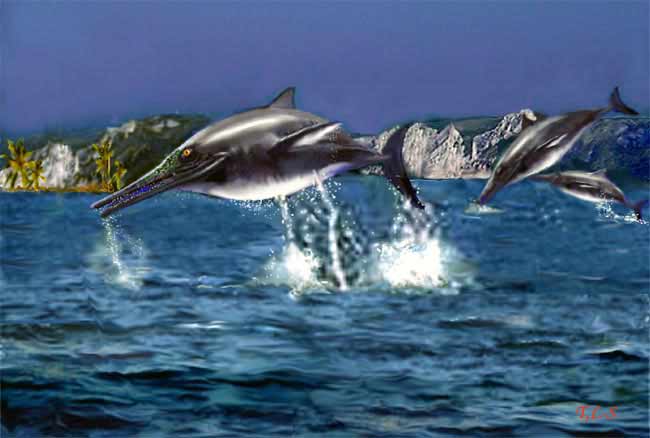Ancient Sea Predators Shed Skin Secrets

Predatory reptiles called ichthyosaurs cruised the oceans between 230 million and 90 million years ago. In a classic case of convergent evolution, their body and fin shapes resembled those of today's dolphins, tunas, and great white sharks—the fastest swimmers in the sea.
A new study shows that the convergence even extended to the molecular composition of the animals' skin.
Soft tissues are seldom preserved, but a few rare ichthyosaur fossils still bear patches of skin that clearly display multiple layers of fiber bundles. Living dolphins, tunas, and sharks have similar strata, in which the fibers are made of collagen—a strong protein that, in layers, stiffens skin against flowing water.
The ichthyosaur fibers were probably collagen, too, but proving it isn't easy: scientists usually identify fossilized molecules chemically, a tricky, destructive procedure requiring large samples.
Fortunately, two biologists found a way around the problem. Knowing that collagen molecules pack themselves in bands separated by about three-millionths of an inch, Theagarten Lingham-Soliar and James Wesley-Smith of the University of KwaZulu-Natal in Durban, South Africa, examined a small sample of fossilized ichthyosaur skin with a scanning electron microscope. Sure enough, they found bands with just the right spacing.
The pair thinks electron microscopy could solve other questions about ancient soft tissue, such as the contentious nature of "proto-feathers" in some Chinese dinosaur fossils, which may turn out to be nothing more than degraded collagen fibers.
The findings were detailed in the Proceedings of the Royal Society B.
Get the world’s most fascinating discoveries delivered straight to your inbox.
- Images: Flying Dinosaurs
- Monster Was T. Rex of the Sea
- All About Dinosaurs


